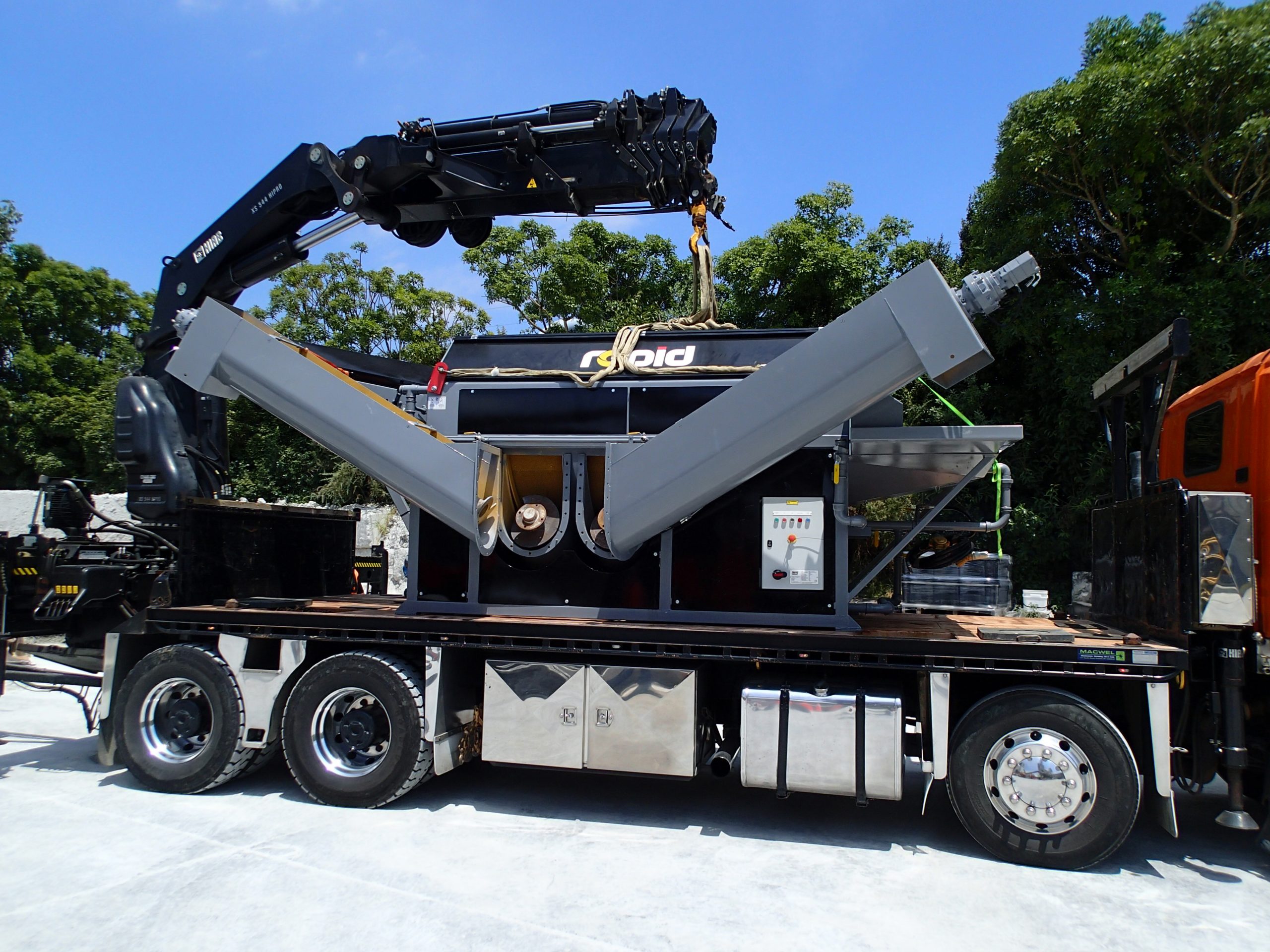An estimated 10.1 billion cubic metres of concrete was produced in 2021. At a conservative estimate of three per cent returned as waste, that’s more than 303 million m3 of waste concrete – or 7.5 times the Hoover Dam – every month, says Alan Dunbar, Technical Sales Engineer – Environment and Process for Lincom Group.
Traditionally, this waste concrete has made its way to landfills or is left to cure and re-crushed. But the industrial equipment supplier is improving the odds of waste recovery with its Rapid Reclaimer.
The Rapid Reclaimer receives returned concrete directly from the agitator and washes and recovers sand, aggregate and grey water. Separating it into its constituent parts returns the concrete to the resource it is.
“Wet concrete has a very high pH level and is considered a waste and must be disposed of appropriately at a facility that is lawfully able to receive that waste,” Alan says.
“Right now, the easiest way for producers to manage this is to discharge it in settling ponds, pay for its disposal or leave it to cure and re-crush it. The Rapid Reclaimer washes and separates the aggregate and sand for reuse immediately. We can get a 99 per cent recovery of materials, which we believe is the best on the market.
“The average truck can return from a job with up to half a cubic metre of concrete. That equates to volumes of concrete in settling ponds, pouring on the ground, and crushed or going to landfills. This can grow exponentially with cancelled orders.”
Alan says the Rapid Reclaimer can process up to 20 m3 of slurried concrete per hour – that’s about five minutes per truck, depending on how much concrete is returned.
The Rapid Reclaimer automatically regulates its infeed to suit working conditions and throughput. It will also turn off its secondary sand screw when feeds are low. It has a specially designed trommel screen and dual sand screws, which Alan says is “one-of-a-kind”. An 11kW electric motor coupled with hydraulic pumps drives the drum screen, sand screws and conveyors.
The washing system consists of a submerged trommel screen, high-pressure water jets at fixed positions and includes final rinsing of sand in the dual dewatering screws and aggregates on the aggregate conveyor. Twin water giraffes load recycled/clean water into truck mixers before cleaning.
An Integral control panel provides start-stop and emergency stop buttons on each side of the reclaimer. The system incorporates an overload automatic shut-off system that will regulate the feed to the machine if the machine is overloading. If this happens, the feed will automatically increase again as the surge of materials is processed, Alan says.
“The machine is fully PLC (programmable logic controller) controlled.
“It’s designed so operators can back the truck up, push the on button and discharge the slurried concrete and washout directly into the machine. Hoses are installed so you don’t have to drag equipment anywhere.
“The machine will even clean itself when it’s finished.”
Alan says reclaiming base materials from unused concrete is gaining popularity globally. Concrete is the highest consumed product on earth, second to water, so recycling and reusing as efficiently and environmentally responsibly as possible should be a consideration for everyone. He believes the Rapid Reclaimer will play a key role as Australia moves to a circular economy.
The reclaimer is compact and portable, allowing small and medium-sized businesses to play their role in resource recovery and larger producers to manage and recover as much valuable resources as possible.
“You can pick this machine up and take it with you,” Alan says. “It’s designed so you can have it as a static plant, or you can put it on a truck and drive it to a work site. There is no requirement for elevated platforms, ramps or inground installations.
“It’s ideal for building sites and mobile plants. It’s small enough not to be in the way and easy enough to move around. You’re cutting down the number of full trucks on the road and the distance unused concrete is being transported.
“Once people become aware of its capabilities, I think it will be very popular,” Alan says. “The original Rapid Reclaimer was an award-winning machine, but the updated version features an upgraded control system, improved design and more power to meet the demands of modern producers.”
This article appears in the June issue of Waste Management Review.
